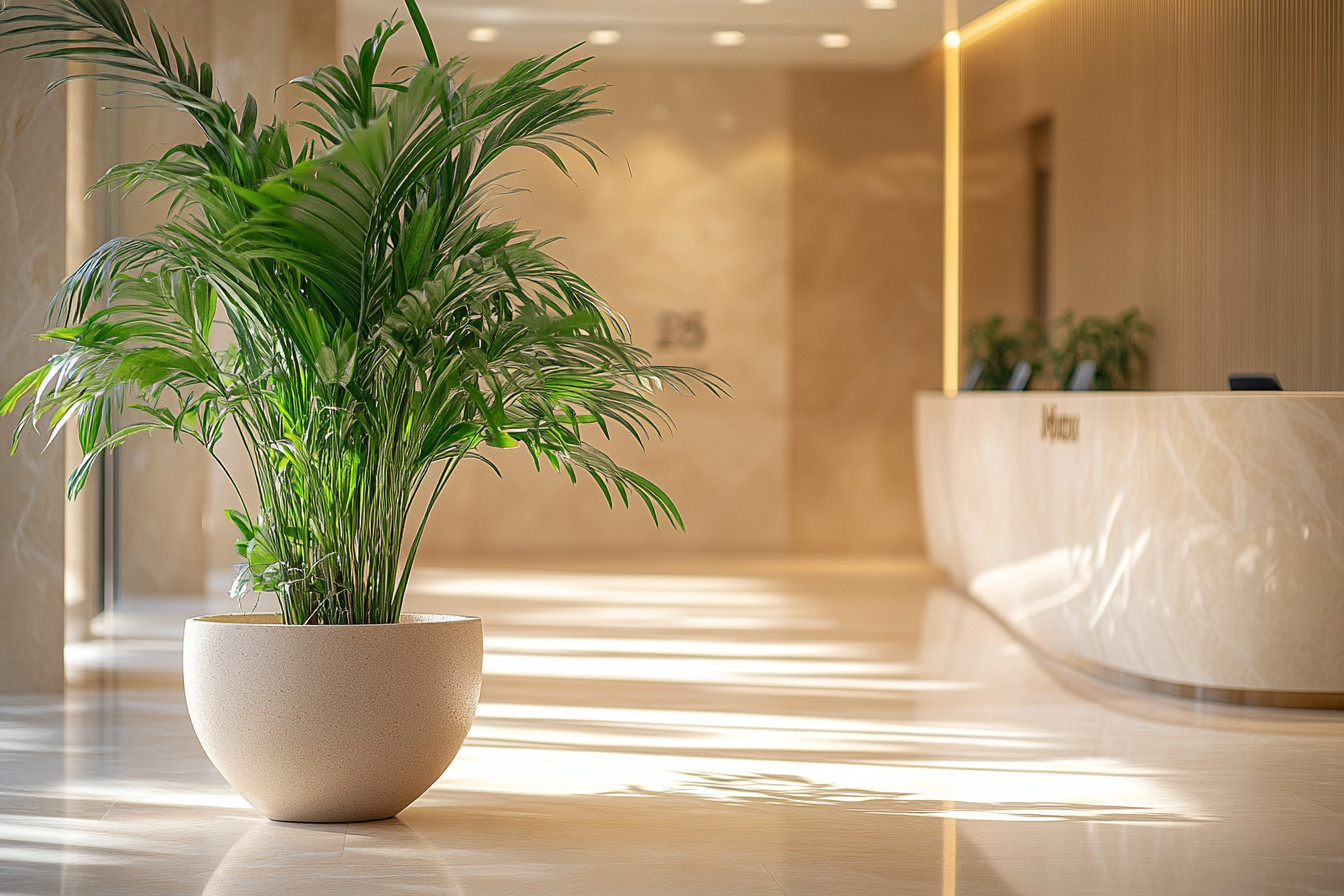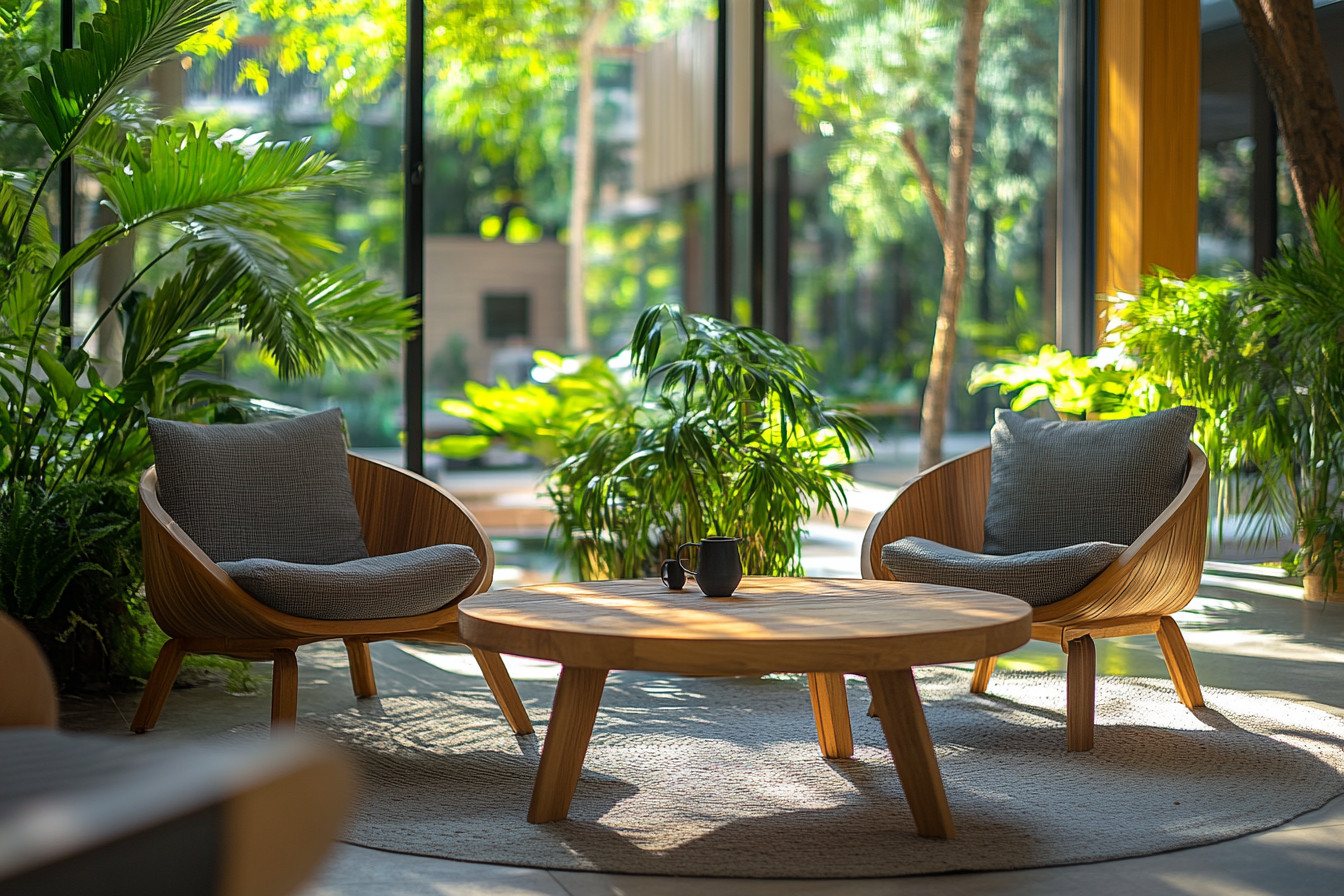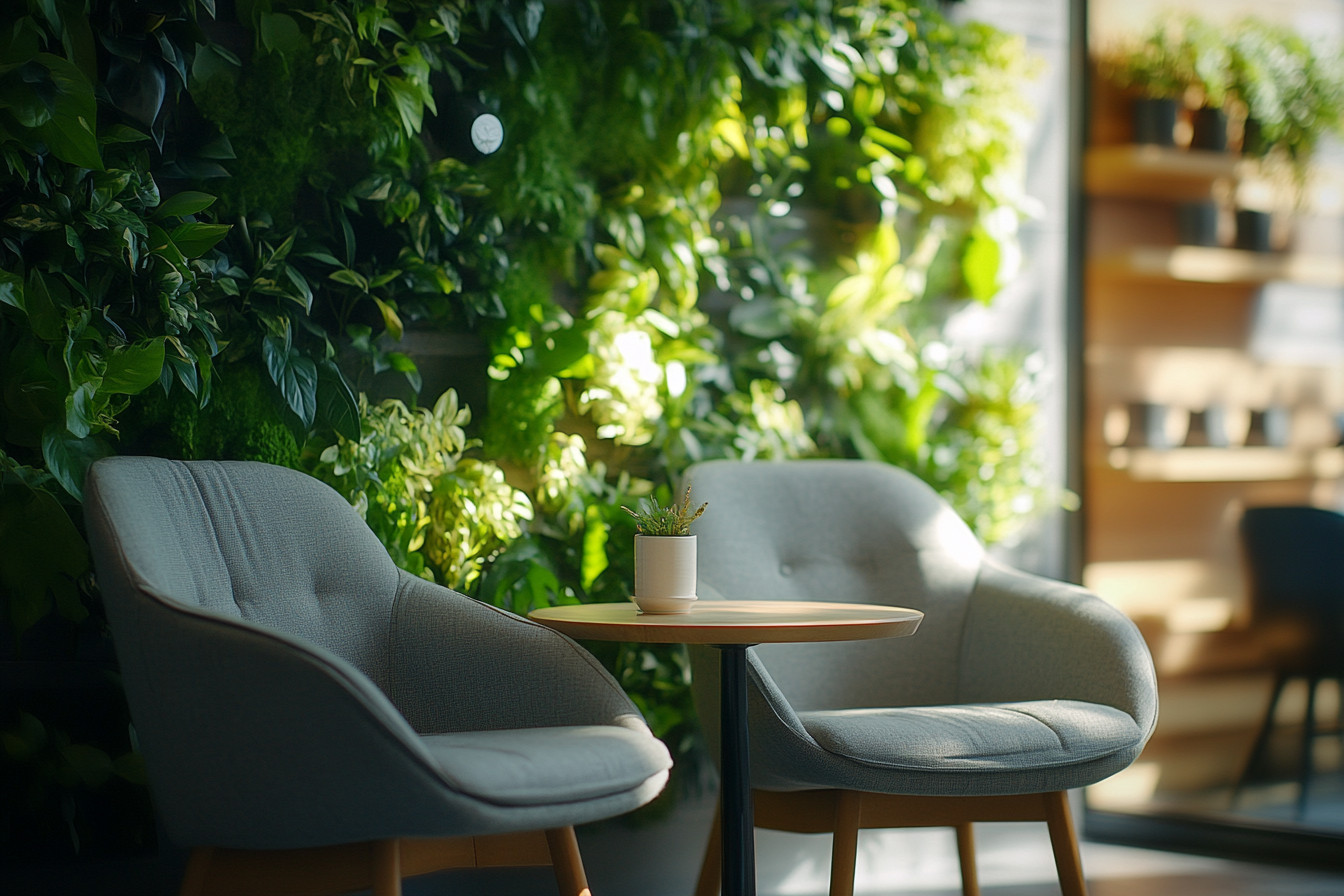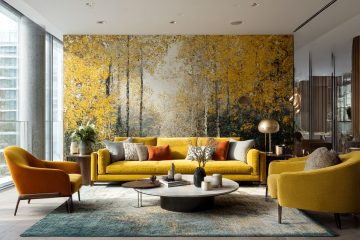When you walk into any building – whether it’s a doctor’s office, a business, or even our church – the first space you encounter sets the tone for everything that follows. I’ve been thinking about this a lot lately as I’ve observed how different entrance areas affect my wife and me during our various appointments and errands around town. Some spaces immediately put you at ease, while others leave you feeling more anxious than when you arrived.
After reading about something called biophilic design over the past few years, I’ve started paying closer attention to what makes certain reception areas feel welcoming versus institutional. The difference often comes down to whether the space feels connected to the natural world or completely cut off from it.
I remember visiting a medical building in Grand Rapids a couple years back. Instead of the usual sterile waiting room with fluorescent lighting and plastic chairs, this place had a stunning wall of plants that reached nearly to the ceiling. You could hear the gentle sound of water trickling from a small fountain, and natural light streamed in through large windows. Even though we were there for a stressful appointment, both my wife and I felt noticeably calmer just sitting in that space.
That experience got me thinking about what makes some spaces feel restorative while others feel draining. From what I’ve learned, it’s not just about throwing a few potted plants around. The most effective approach seems to be engaging multiple senses – not just what you see, but what you hear, smell, and even feel.
The sound of water, for instance, has an almost immediate calming effect. I’ve noticed this in my own home since I added a small fountain to our modified garden area. There’s something about that gentle bubbling that helps mask other distracting noises and creates a sense of privacy. You don’t necessarily need an actual fountain either – I’ve seen some places use recordings of nature sounds or even projected images of flowing water that seem to have a similar effect.
Plants serve multiple purposes beyond just looking nice. I learned from my research into indoor air quality that certain plants – like snake plants and pothos – actually filter pollutants from the air. When my wife was having more trouble with her breathing after her stroke, adding these air-purifying plants to our main living areas seemed to help. In a reception area, they can serve the same dual function of improving both air quality and mood.
I’ve also seen clever uses of larger plants as natural room dividers. Instead of building walls or installing permanent partitions, some places use tall plants to create more intimate seating areas within a larger space. It gives you a sense of privacy without feeling closed in.
Natural light makes an enormous difference, though it’s not always easy to modify in existing buildings. When we enlarged some of our windows at home, the improvement in both our moods was almost immediate, especially during Michigan’s long winter months. I’ve noticed that reception areas with good natural light feel more welcoming and less institutional. If you can’t add windows, even changing the type of artificial lighting to something warmer and more diffuse helps.
The materials you use matter too. I’ve become more aware of how different textures and finishes affect the feeling of a space. Natural materials like wood and stone feel warmer and more inviting than plastic and metal. When we redid parts of our home, we made an effort to incorporate more natural materials – reclaimed wood for shelving, stone accents where we could afford them. It doesn’t have to be expensive, but it does make the space feel less sterile.
One thing I’ve learned from working on our church’s fellowship hall is that subtle changes often work better than dramatic ones. The goal isn’t to make an indoor space look like a forest, but rather to create gentle connections to the natural world. Too much can feel overwhelming, especially to older adults who might be dealing with sensory processing issues.
Scent is another element that’s easy to overdo but powerful when used sparingly. My wife has always been sensitive to strong fragrances, so I’ve learned that a light touch works better. Sometimes it’s just the natural scent of plants or wood, not added fragrances at all.
From my volunteer work with the senior center, I’ve seen how these principles can be applied even with limited budgets. Simple changes like repositioning furniture to take advantage of existing natural light, adding a few well-chosen plants, or incorporating natural textures through artwork or accessories can transform a space without major renovations.
The key insight I’ve gained is that these design choices aren’t just aesthetic preferences – they have real impacts on health and wellbeing, especially for older adults or people dealing with health challenges. A reception area that incorporates natural elements can actually help reduce stress and blood pressure. That’s not just feel-good theory; there’s research backing this up.
What I find most interesting is that the best examples of this kind of design don’t announce themselves. They work subtly, making you feel better without necessarily being able to pinpoint why. The space just feels right – welcoming, calming, and somehow more human than the sterile environments we’ve gotten used to in many public buildings.
As someone who’s spent decades in buildings designed for efficiency rather than human comfort, I appreciate how much difference these thoughtful touches can make. A reception area doesn’t have to be just a place you endure while waiting for your real destination. With some attention to natural elements, lighting, and materials, it can become a space that actually helps you feel better rather than worse.
The practical benefits extend beyond just feeling better. For businesses, a welcoming reception area can put customers at ease before important meetings or procedures. For healthcare facilities, it can help reduce patient anxiety. For any organization, it shows attention to human needs that goes beyond basic functionality.
I’ve started advocating for these kinds of improvements in the various committees and organizations I’m involved with. Progress is slow when you’re dealing with institutional decision-making and tight budgets, but I’ve found that people generally respond well once they understand the connection between environment and wellbeing.
The maintenance aspect is something to consider, especially for organizations with limited staff. Plants need care, water features need cleaning, and natural materials may require different upkeep than synthetic ones. But in my experience, the benefits outweigh these challenges, and there are usually volunteers or staff members who enjoy taking care of plants as part of their routine.
What strikes me most is how these principles connect to older ways of building and designing spaces. Before we had central air conditioning and artificial lighting, buildings naturally incorporated more connections to the outdoors. Porches, large windows, natural ventilation – these weren’t just practical necessities, they were ways of staying connected to natural rhythms and seasonal changes.
We can’t go back to those older building styles entirely, but we can learn from them. The goal isn’t to recreate the past, but to reclaim some of what we lost when we sealed ourselves off from the natural world in the name of efficiency and climate control.
A well-designed reception area becomes more than just a waiting room – it becomes a brief respite from the artificial environments we spend most of our time in. That might sound overly dramatic, but when you’re dealing with health issues or the stresses of aging, these small oases of calm can make a real difference in your day.
Robert is a retired engineer in Michigan who’s spent the past few years adapting his longtime home for accessibility and wellbeing. He writes about practical, DIY ways to make homes more comfortable and life-affirming as we age — from raised-bed gardens to better natural light.





